Common Zinnia: Plants And Care Tips For A Zinnia Elegans
Zinnias have always been popular summer flowers and with their variety of colors and flowering joy for every gardener. We introduce the plant and give tips for cultivation in your own garden.
A summer flower found in almost every cottage garden is the zinnia (Zinnia Elegans). It is sometimes popular as a cut flower, as it produces numerous colorful blooms throughout the summer. In this article, you will learn everything about the flower, its properties, requirements for location and care, as well as details on sowing and planting.
Zinnias: Origin and characteristics
Table of Contents
Zinnia belongs to the large family of composite plants (Asteraceae) – just like daisies (Bellis perennis) and Dahlias. In the genus flower, there are about 20 species, which grow as annuals, perennials, or semi-shrubs. Zinnia Elegans is mainly planted in our country. This annual summer flower originates from Mexico and is also found in other areas of Central and South America.
Zinnia is an annual summer flower that grows upright and bushy. The leaves of the flower are characteristically heavily covered with short hairs, giving them a rough feel. They sit opposite directly on the flower stalk and are roughly triangular in shape.
A terminal flower forms at the end of each stem and, depending on the variety, can be double or single and colored in many shades from white to yellow, orange, red, and dark pink.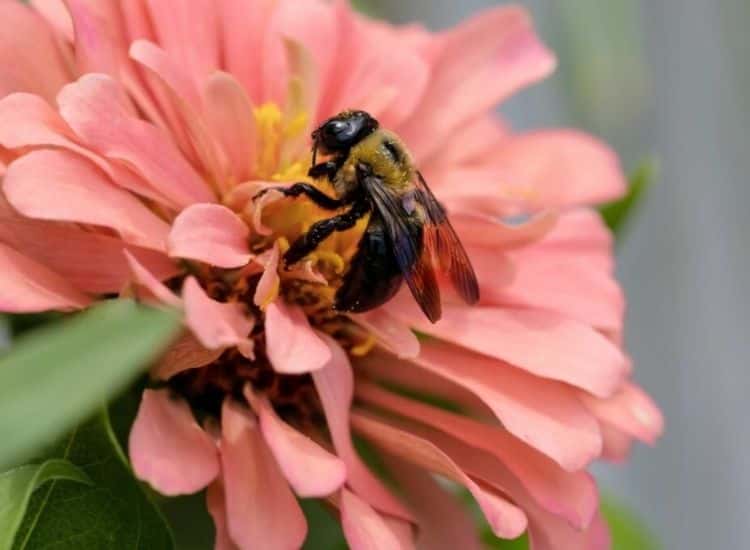
However, strong colors fade quite quickly in strong sunlight. The flowering period extends from July to September, occasionally even into October.
The most beautiful varieties and species
If you want to plant flowers, there is a huge selection of varieties and also a few different species of the genus Zinnia. They differ mainly in flower color, shape, and size, as well as growth height. While you can also use tall-growing cultivars for bedding, small-growing dwarf flowers are better suited for the balcony. We present a selection of the most beautiful varieties for all locations.
All the varieties mentioned belong to the species Zinnia elegans
- Liliput: Low zinnia mixture of different colored, small-growing plants with a growth height of only 19 – 23 in. The flowering period extends from July to October.
- Peter Pan: Dwarf zinnia with a growth height of only 12 in. and flowers of about 3 inches in orange-yellow to blood-red color.
- Polar Bear: Almost entirely double white zinnia with large flowers and plants up to 39 in. high.
- Giant Cactus: 19 – 23 in. tall zinnia variety with semi-double, large flowers, and slightly rolled petals reminiscent of cactus dahlias.
- Thumbelina: Smallest of all low zinnia varieties with only 6 – 8 inches growth height and dahlia-like flowers in a wide range of colors. Ideal mini flower for small balcony boxes and pots.
- Whirlygig: Colorful mix of bicolor flowers featuring various combinations of pink, orange, red, and white and about 23 – 27 in. growing height.
- Zinnia angustifolia: Narrow-leaved flower with lavender-like leaves and small red, pink, deep orange, yellow or white flowers. The petite plants reach a height of growth of about 12 – 20 in.
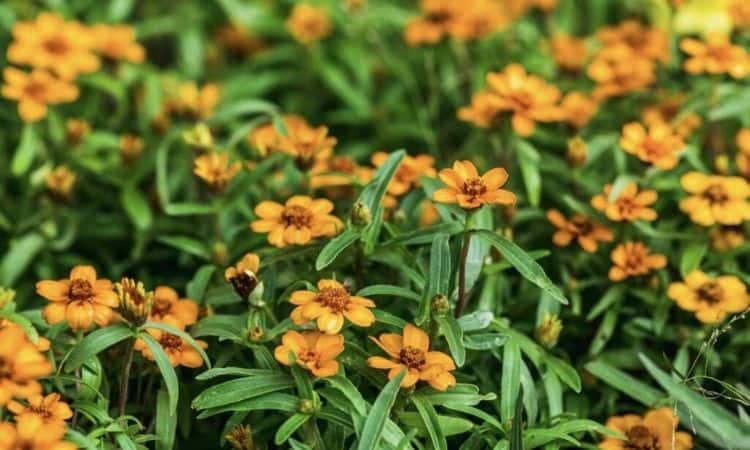
Sowing, pricking out, and planting zinnias
Zinnias can be grown indoors between February and April because their seedlings do not tolerate cold and love it warm. To sow zinnias, first, prepare a seed tray or small pots and fill them with a low-nutrient growing soil.
During an initial period after germination, seedlings of zinnia require very few nutrients and are encouraged to form strong roots by a nutrient-poor soil. Our growing soil provides a loose structure and water-retaining environment for the delicate seedlings that are entirely free of the climate-damaging mined peat.
Now sow the seeds of the flower with a sowing depth of about 0.20 to 0.40 inches in the soil, water it, and place the seed tray or pot at 62 to 68 °F on a bright windowsill. Always keep the soil well moist, but not wet. Germination occurs after about 10 to 20 days.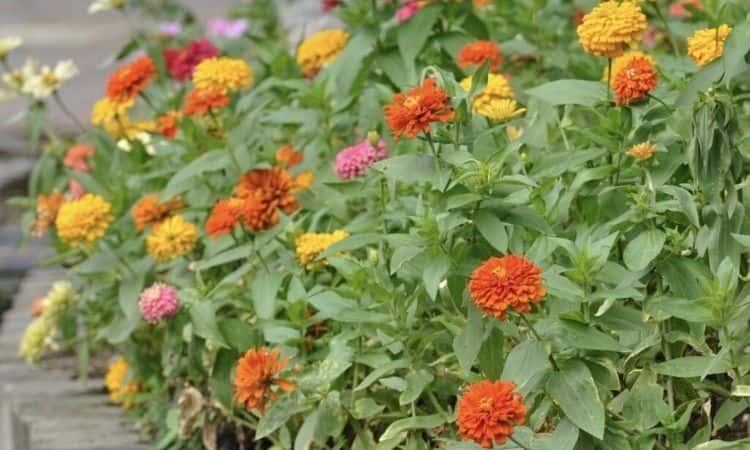
As soon as the first true leaves form after the cotyledons, you may prick out. Now transfer the seedlings to more nutrient-rich soil in individual pots and allow the zinnias to grow a little cooler at 48 to 52 °F until planting out.
After the Ice Saints, the young plants may be planted outdoors in mid-May to late June. Whether in a pot, balcony box, or bed – leave 20 to 30 cm planting distance between the individual zinnias. The bushy growth of the flower usually closes the gaps quite quickly.
Choose planters with good water drainage and sufficient size for planting on patios and balconies. For individual zinnias, a pot should hold at least 5 to 10 gallons, depending on the growth rate.
Fill the bottom of your planters with a drainage layer of coarse gravel or expanded clay about 3 inches high and fill with nutrient-rich potting soil. Sustainably produced potting soil contains all the essential nutrients to promote lush flowering and plant health.
Now place the zinnia seedlings in the soil, keeping in mind the planting distance. Following this, water vigorously so that the soil is flushed to the roots and the flowers can grow well.
Summary
- Sowing: February – April
- Germination: after 10 – 20 days
- Planting time: mid-May – end of June
- Planting distance: 7.8 – 11.8 inches
- Habitat: Sunny, protected from wind and warm
- Soil: Loamy-sandy and rich in nutrients
- Cultivation in beds and in tubs possible
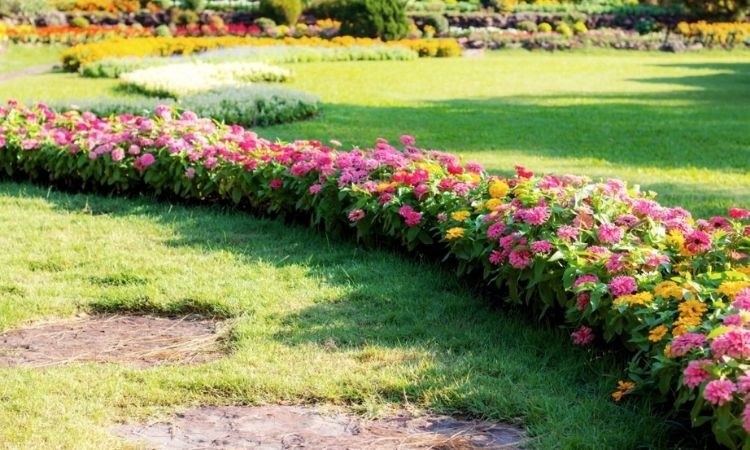
Care of zinnias
The flowers are thirsty garden inhabitants and need a regular water supply. The soil should always be kept evenly moist for them, but never get wet and form waterlogging, otherwise, root rot can occur.
The magnificent flowering zinnias can be pruned for the vase throughout the flowering period. To do this, use a sharp knife and prune the flower stalk back to one pair of leaves at a time, as this is where the plant will re-branch and produce flowers again. The flowers will keep fresh for about one to two weeks in water.
The flowers, like many summer flowers, depend on a regular supply of nutrients and should therefore be well fertilized. When fertilizing zinnias in pots or window boxes, it is especially recommended to use a liquid nutrient fertilizer.
About every two weeks, 0.5 to 0.8 us fl oz is added to 169 oz of watering water and thus simply applied when watering. The nutrients contained reach the roots directly and are quickly absorbed. Acute deficiency symptoms, such as a yellowing of the lowest leaves due to nitrogen deficiency, can also be quickly remedied in this way.
Are zinnias hardy?
Zinnias are not hardy in our area, as they cannot tolerate frost of any kind. As it is usual with annual plants anyway, the flowers die completely after seed ripening, so it cannot be overwintered indoors either. Only in the form of seeds can the plant make it to next year.
Propagating zinnias
Zinnias can be propagated by their seeds. However, in order for seeds to form, they must not be double flowers, as these are infertile. Flowers visited by bees and other pollinators cross with other varieties of the flowers so that often the seed no longer contains the original variety of the mother plant.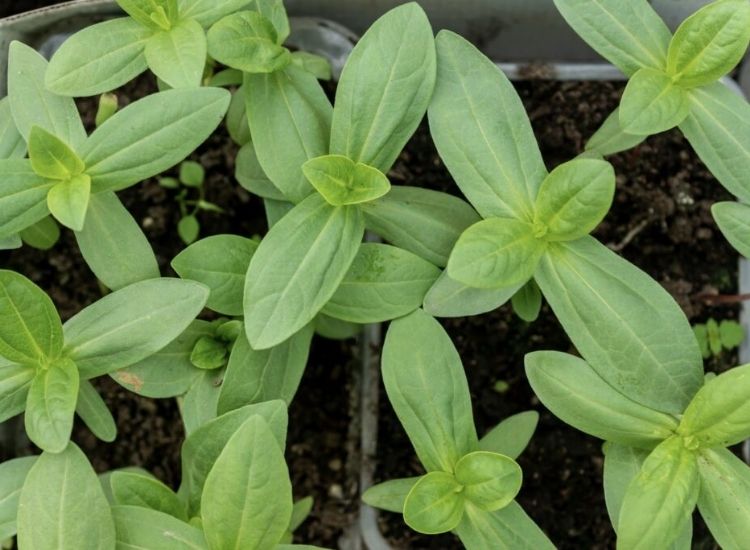
However, for those for whom varietal purity is not a top priority, they may be able to enjoy gorgeous new color combinations from homegrown seeds. For seed collection, faded flowers must of course be left standing and not pruned. The numerous elongated achene fruits of the zinnia ripen until October and can be cut off together with the flower head in late fall when the inflorescence has dried up and dried indoors for two to three weeks at room temperature.
Once the seeds trickle out on their own after a bit of rubbing, separate them from flower debris and store them in paper bags in a dry, cool place. Flower seeds can germinate for about four years if stored well.
Common pests of zinnias
Slugs love zinnias and can quickly completely kill young plants. Adult plants, on the other hand, are hardly at risk. Slug protection, therefore, makes sense, especially in the first few weeks after planting. In addition, aphids and spider mites can be found on the summer bloomers. Outdoors, however, beneficial insects such as the ladybug quickly limit explosive reproduction. For more tips on aphid control, see our special article.
Are zinnias poisonous?
The flowers are not poisonous per se, but they can cause allergic reactions when the sap comes into contact with the skin. This is due to alkaloids such as nicotine and various terpenes contained within. Therefore, ideally, always wear gloves when pruning plants. The flowers of the zinnia, on the other hand, are edible and also provide a real feast for the eyes as a decoration or ingredient in flower butter.
A distant relative of the zinnia is the sunflower, also an annual, which can reach amazing heights of growth. We introduce you to this popular summer flower and cover all topics from variety selection to planting, care, and harvesting.
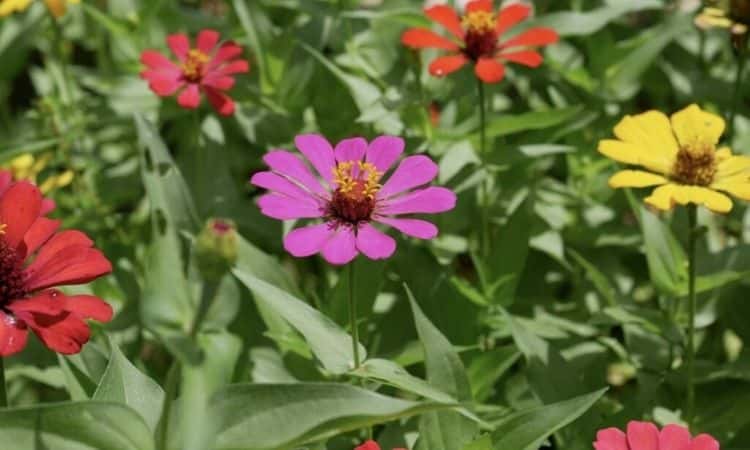

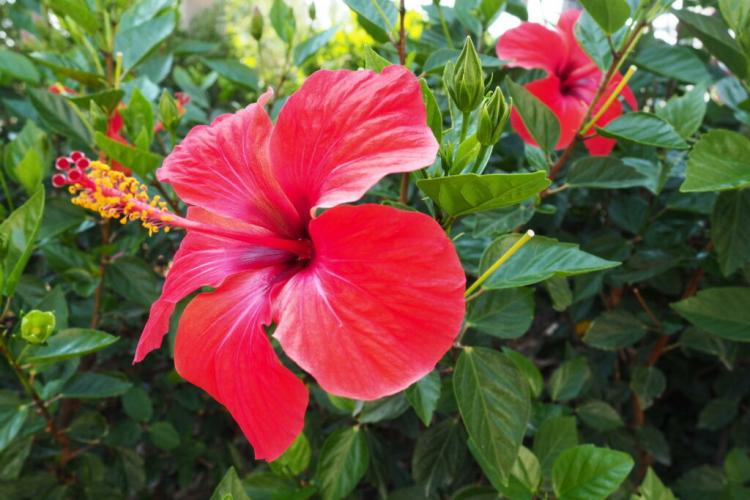
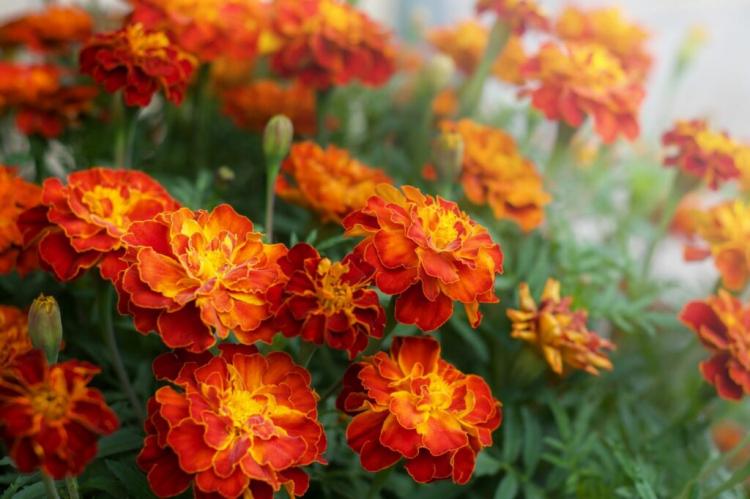
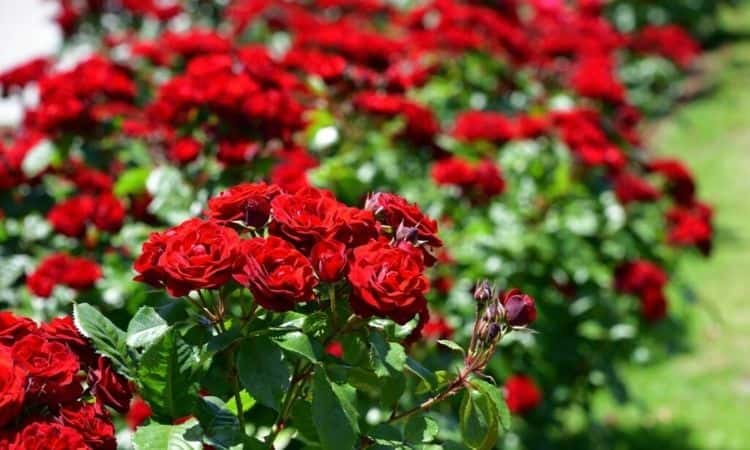
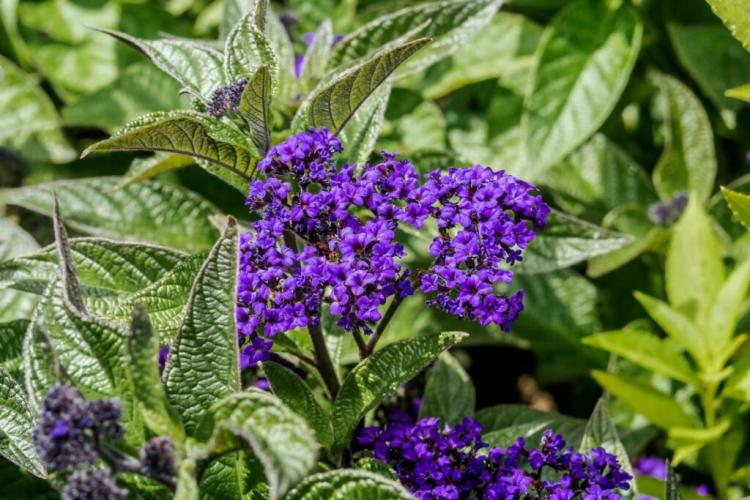

I like to plant zinnias as gap fillers between roses, perennials and grasses. There are many varieties and colors that bring color to the beds from June until frost. They also make good durable flowers for the vase. They grow 15 – 31 inches tall, depending on the variety, and branch well. Insects and butterflies like to visit these composite flowers. Zinnias love sunny spots and are not particularly demanding on soil.
You can sow zinnias directly outdoors starting in May; however, I prefer to preplant them starting in February/March and plant them out starting in mid-May. They are vulnerable to slugs as small plantlets, which makes direct seeding difficult. By mid-May, I can also see quite well the gaps they are supposed to fill.
The seeds are mostly offered as mixtures and sometimes unusual color contrasts occur as a result.
By removing the flowers that have faded, one achieves a constant supply of flowers. Self-seeding of zinnias unfortunately does not exist in my garden.
Zinnias are beautiful flowers.
But they are frost sensitive and the slugs love them too.
I have never had any luck with self-seeding. Probably not, because they are somewhat more demanding in cultivation.